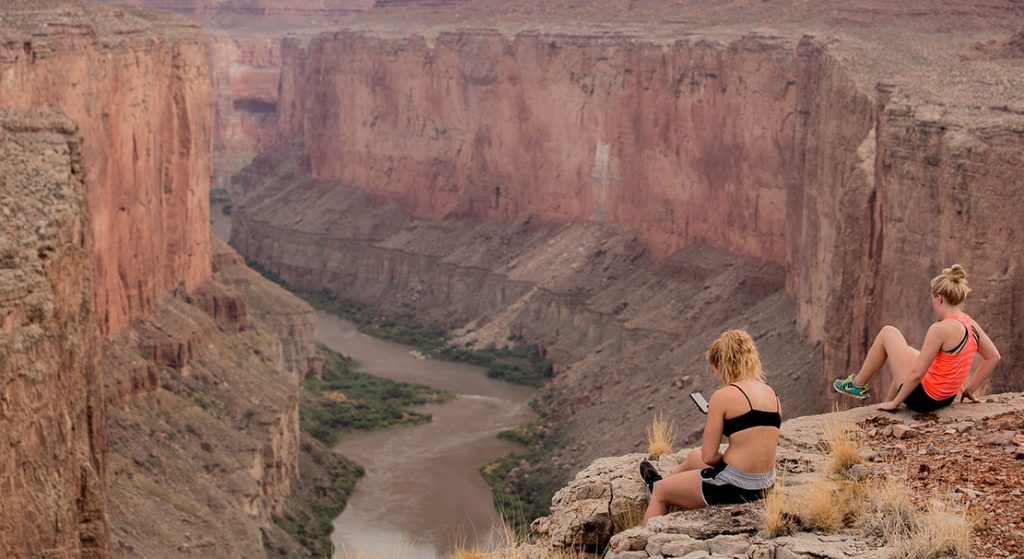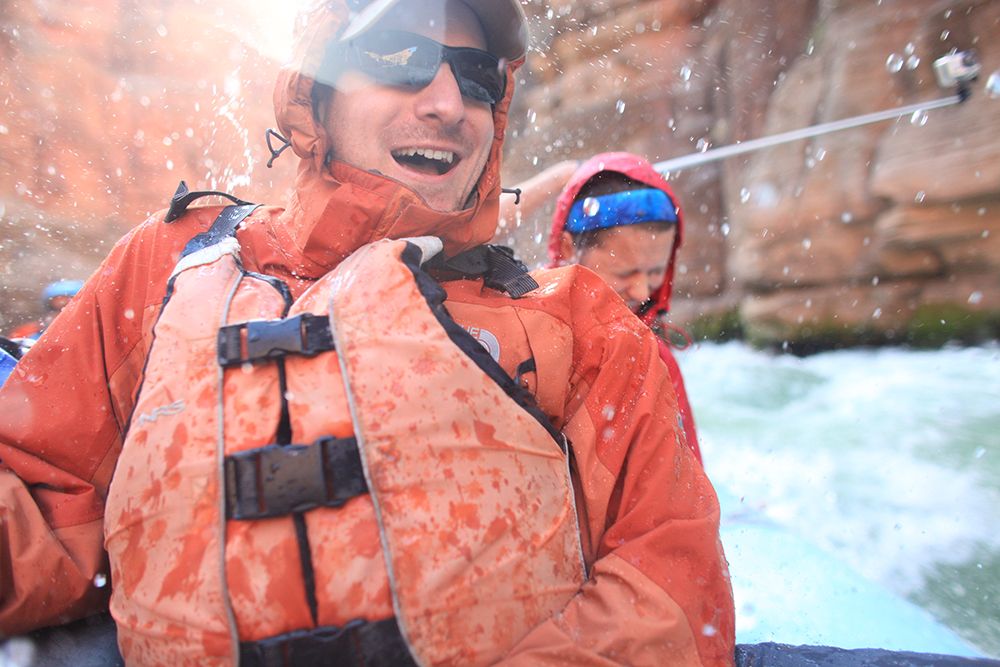When you’re going on a “once in a lifetime” trip, it makes sense that you want to take pictures to commemorate the event! There are several different camera options with pros and cons to each choice.
Some general things to keep in mind:
- Water, fine sand, and sun are everywhere and whatever camera you bring, you’ll need to actively protect it from these damaging elements. If you drop your camera into the river, there’s no retrieving it. You may want to consider insuring it, be sure to research travel insurance policies as many include personal gear in their package.
- Always listen to your guide! Many rapids can pack a punch and when the guide tells you to hang on with two hands, they mean hang onto the raft and not your camera!
- We recommend bringing a portable power bank to charge your camera during the trip. For more details, check out our blog on charging devices.
- It can be tempting to go through your photos at the end of each day, but it is also draining on your camera battery. Try to put off looking at and editing pictures. Enjoy your moments in the canyon and relive your trip once you get home.
- Note: Drones are prohibited in all national parks including Grand Canyon National Park. Please do not bring them, even if you’re a licensed drone pilot.

Cell Phones
Pros:
– Small and accessible
– Waterproof cases are readily available
– You probably already own one
Cons:
– Don’t forget to backup all your contacts, photos, etc. – your phone is much more than a camera
– Limited ability to zoom in – for example, you may see bighorn sheep on a faraway slope
– Some types are more prone to shatter and the heat can be hard on your device
How to Protect:
Options are numerous. Waterproof pouches with lanyards are nice so you can keep your phone readily available and attached to your person. Recent guests have recommended waterproof phone pouches by JOTO and Seawag. Be sure to put your phone in airplane mode and turn off wifi and GPS. You can also select “low power mode” if that’s an option on your phone. There is no service in the canyon and your battery will drain rapidly if it’s searching.
Point and Shoot Cameras
Pros:
– Small and accessible
– Waterproof cases are readily available or you can simply buy a waterproof camera
Cons:
– You might not own one already or the one you have isn’t waterproof
– Lower resolution than some other options
How to Protect:
Soft-sided and hard-sided cases are available. Some prefer a hard-sided case (like Pelican) for additional protection. Others prefer a soft-sided case with a window to take photos through. Regardless of which case you choose, use a carabiner and clip it to the raft instead of putting it in the dry bag. This simple solution keeps your camera nearby.
GoPro
Pros:
– Great for recording the action through the rapids. Be sure to get a strap for your camera so you can hang on to the raft and still get great whitewater footage.
– Waterproof cases often come with the camera package. They’re pretty much made for this kind of activity.
– Typically high resolution
Cons:
– Some don’t have viewfinders. It can be hard to know what you are filming.
– It’s tempting to film every rapid and every hike, but battery life can be an issue. Try to be selective and do short, frequent shots.
How to Protect:
You’ll want a waterproof case and a strap for sure! Helmets are not used on Grand Canyon trips, so keep that in mind when selecting your accessory.
DSLR
Pros:
– High resolution
– Ability to take some specialty shots
Cons:
– These cameras tend to be even more sensitive to water and sand. Protecting your camera will be a full-time job in the canyon.
– When protected well, they can be bulky and less accessible.
How to Protect:
Most prefer hard-sided, waterproof cases, but you’ll be adding considerable bulk with this size camera. You’ll also need to bring a strap and some extra carabiners to secure it to the raft. People are often crawling around the raft during the day, so a soft-sided case won’t protect your camera from getting smashed, but it does keep it more accessible.
As you can see, there is a lot to consider when deciding how to document your epic adventure. At the end of the day, it’s your decision to make because your gear is your responsibility. Our best advice – don’t leave home without a camera! Even a single-use, waterproof camera is better than nothing. As always, if you have additional questions, feel free to contact our office. We’re here to help!

